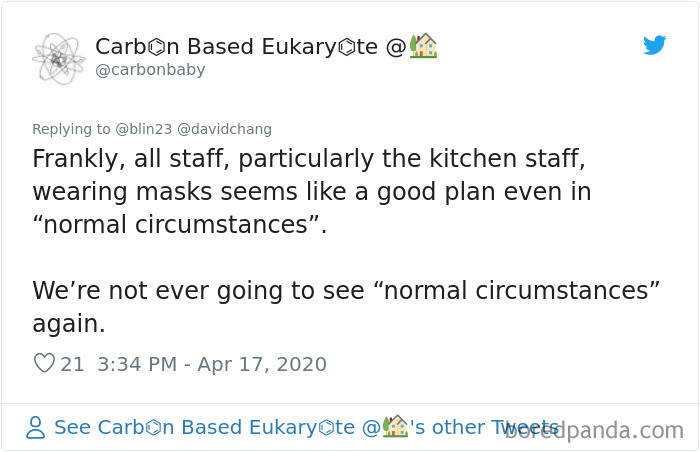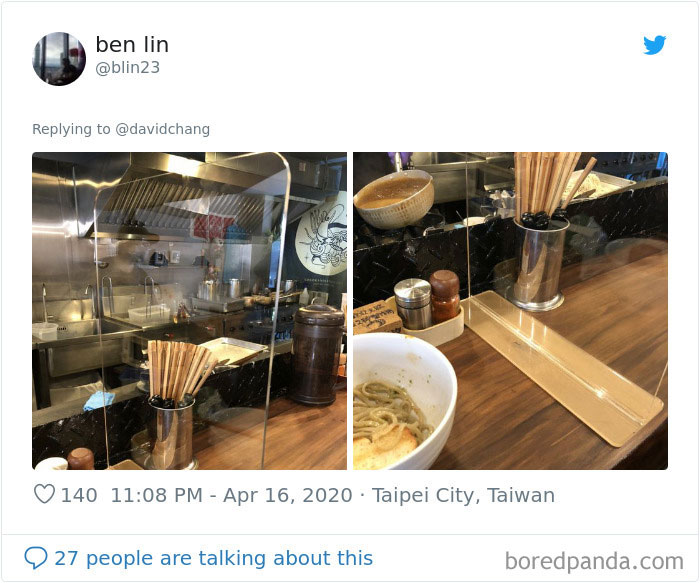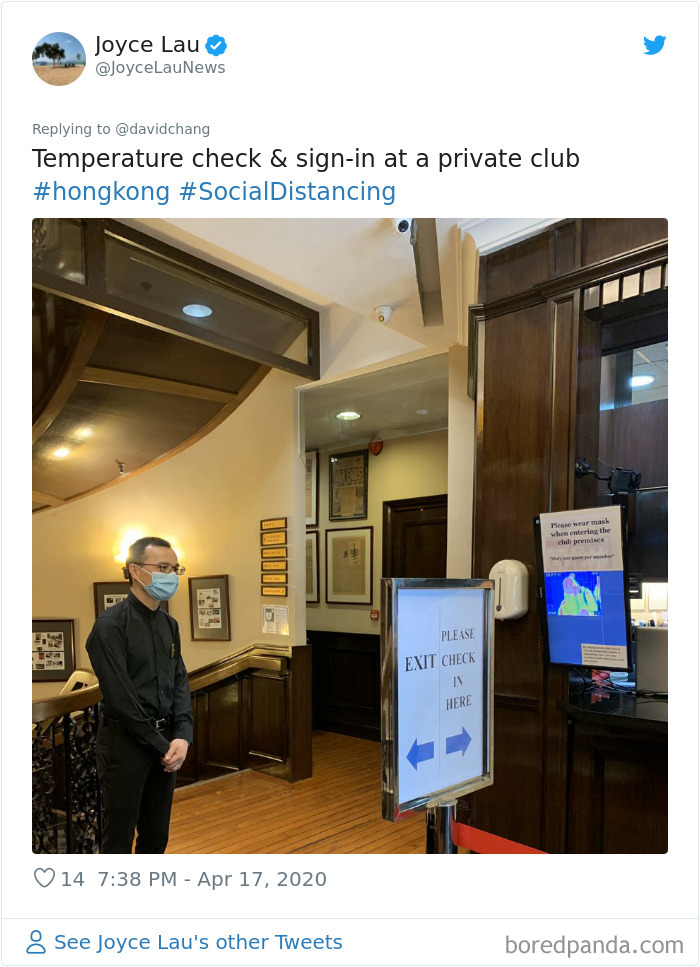
People From East Asia Share Their Post-Quarantine Restaurant Experiences To Show Westerners What To Expect
The coronavirus pandemic has changed more things than we think—especially the way people eat out in public now. Restauranteur, chef, and founder of Momofuku, David Chang, asked Twitter users from East Asia to share photos of what dining out and restaurant protocol are like now.
Lots of people were interested to share their post-pandemic dining experiences. While the specific rules vary from establishment to establishment and city to city, people described how the staff wear masks and disinfect cutlery in front of them, while customers can use free disinfectant for their hands. Some places still check customers’ temperatures as they walk in and have partitions to separate booths and people sitting at tables.
A few people also shared what the regulations were like immediately after restaurants and fast food chains reopened, and how these tough rules are slowly being rolled back. Scroll down to see what dining out in East Asia is like now, dear Pandas. And if you're living in the region, share your thoughts and experiences in the comments.
More info: Twitter | Instagram | Facebook | Momofuku.com
This post may include affiliate links.
Chang opened Momofuku Noodle Bar in New York City in 2004. Since then, the Momofuku Group has opened restaurants in the US, Australia in Canada.
The chef told Vice that there's a good chance that Momofuku "may never reopen again" and that it's the largest corporations with the biggest financial cushion that will be able to survive the coronavirus pandemic. "It's whoever has the most cash that can survive this."
The South China Morning Post writes that Asian consumers might break their habit of dining out often even once life fully gets back to normal.
An online survey by market researcher Nielsen Connect collected responses from more than 6k respondents from 11 markets at the start of March. The data showed that 86 percent of the people polled in China said that they’d eat at home more often, 77 percent said the same in Hong Kong, and 62 percent expressed the same opinion in South Korea, Malaysia, and Vietnam.
“The Covid-19 crisis has certainly changed attitudes and behaviors of consumers. I don’t believe people will fully stop eating out of the home, but clearly the virus impact will last for quite some time and we do expect consumers to continue to eat ‘more’ at home for the foreseeable future,” managing director for Southeast Asia at Nielsen Connect told the SCMP. “But whilst consumer behavior across markets in the immediate terms has definitely changed, the subsequent question is ‘when will it return to normal?’ The answer may well be never.”
This doesn't look very effective at all. The seating is much too close.
Meanwhile, some restaurants have used the pandemic to grab customers’ attention and bring a bit of humor back into our lives. For instance, chef Hoang Tung from the Vietnamese capital Hanoi started selling coronavirus-themed burgers. Yep, even with little dough ‘crowns.’
“We have this joke that if you are scared of something, you should eat it. That’s why the coronavirus isn’t scary anymore after you eat a burger in the shape of the virus itself. That way of thinking spreads joy to others during this pandemic,” Tung said.
The problem with wearing mask at all rimes except eating, is that you have to use a fresh mask after eating.
We shouldn't go back to "normal" and yes, absolutely, those who prepare and serve food should always wear masks
I think we should create another "normal". Maybe less polluting, but also less restrictive.
Load More Replies...We shouldn't go back to "normal" and yes, absolutely, those who prepare and serve food should always wear masks
I think we should create another "normal". Maybe less polluting, but also less restrictive.
Load More Replies...
 Dark Mode
Dark Mode 

 No fees, cancel anytime
No fees, cancel anytime 














































































